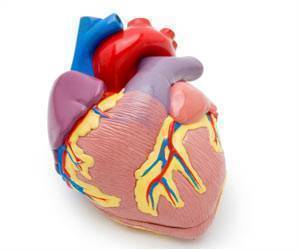- Tissue damage or injury caused due to disease or otherwise, is a major health issue
- Tissue engineering offers a potential solution to addressing tissue damage and failure.
- Currently available vascular grafts to nourish the new tissue is not fully satisfactory
- New study turns to plants to provide a potential and viable solution
Reason for Research
The research team felt that currently available vascular grafts and scaffolds have been unable to provide an entirely satisfactory solution of forming a vascular network, to provide nourishment to the implant. They hope to address the existing gaps in the field by turning to plants in their new research."Plants and animals exploit fundamentally different approaches to transporting fluids, chemicals and macromolecules, yet there are surprising similarities in their vascular network structures," the authors wrote. "The development of decellularized plants for scaffolding opens up the potential for a new branch of science that investigates the mimicry between plant and animal."
Details of the Research
- The scientists employed spinach leaves that were stripped of plant cells leaving behind the transport network.
- They were able to flow fluids and microbeads similar in size to the human blood cells successfully.
- They were also able to seed the spinach venous network with cells that line human blood vessels (endothelial cells)
- Finally, the scientists were able to cultivate beating human heart cells on these spinach leaves.
How the Spinach Leaves Were Stripped of Their Cells
The paper's first author is Joshua Gerslak, a graduate student who was instrumental in designing and conducting the experiments, and in fact developed an effective method of decellularizing the spinach leaves, by perfusing the venous network on the leaf with a detergent solution."I had done decellularization work on human hearts before and when I looked at the spinach leaf its stem reminded me of an aorta. So I thought, let's perfuse right through the stem," Gershlak said. "We weren't sure it would work, but it turned out to be pretty easy and replicable. It's working in many other plants."
Other Leaves that Have Been Used to Form Vascular Scaffolds
In addition to spinach leaves, the research team was able to successfully decellularize parsley, Artemesia annua (sweet wormwood), and peanut hairy roots. The authors believe that the unique physical properties of each plant itself could be exploited for use in various tissue engineering techniques.- For instance, spinach leaf might be apt in a highly vascularized tissue like the heart.
- Jewelweed, with its hollow cylindrical stem, could be more suited to arterial grafts
- The vascular columns of wood with its innate strength and geometrical structure might be useful in bone grafts.
Current Scenario in Vascular Tissue Engineering
As mentioned earlier, tissue engineering offers a solution to replace damaged tissues by implantation of natural, synthetic, or semisynthetic tissue and organ substitutes, that are fully functional initially by itself, or grow into the required functionality within a limited time span.- Development of autogenous vascular substitutes have been a major advance in the field of reconstructive arterial surgery, but these tissue sources are insufficient or not available. These methods are also time consuming and expensive.
- Currently, synthetic polymers such as polytetrafluoroethylene (ePTFE), polyethylene terephthalate (Dacron®) and polyurethane are extensively employed to generate synthetic vascular grafts. However, these are associated with the risk of thrombus formation and compliance mismatch, and in addition are non-biodegradable, though degradable scaffolds are also available, but are expensive.
Future Research Plans
- Optimization of the decellularization process
- To assess how human tissues grow in response to various vascular scaffolds
- To generate a secondary vascular network to permit outflow of blood or fluids from human tissue.
References:
- Joshua R. Gershlak, Sarah Hernandez, Gianluca Fontana, Luke R. Perreault, Katrina J. Hansen, Sara A. Larson, Bernard Y.K. Binder, David M. Dolivo, Tianhong Yang, Tanja Dominko, Marsha W. Rolle, Pamela J. Weathers, Fabricio Medina-Bolivar, Carole L. Cramer, William L. Murphy, Glenn R. Gaudette. Crossing kingdoms: Using decellularized plants as perfusable tissue engineering scaffolds. Biomaterials, 2017; 125: 13 DOI: 10.1016/j.biomaterials.(2017).02.011
- Biomaterials for vascular tissue engineering - (https://www.ncbi.nlm.nih.gov/pmc/articles/PMC2822541/)
Source-Medindia















